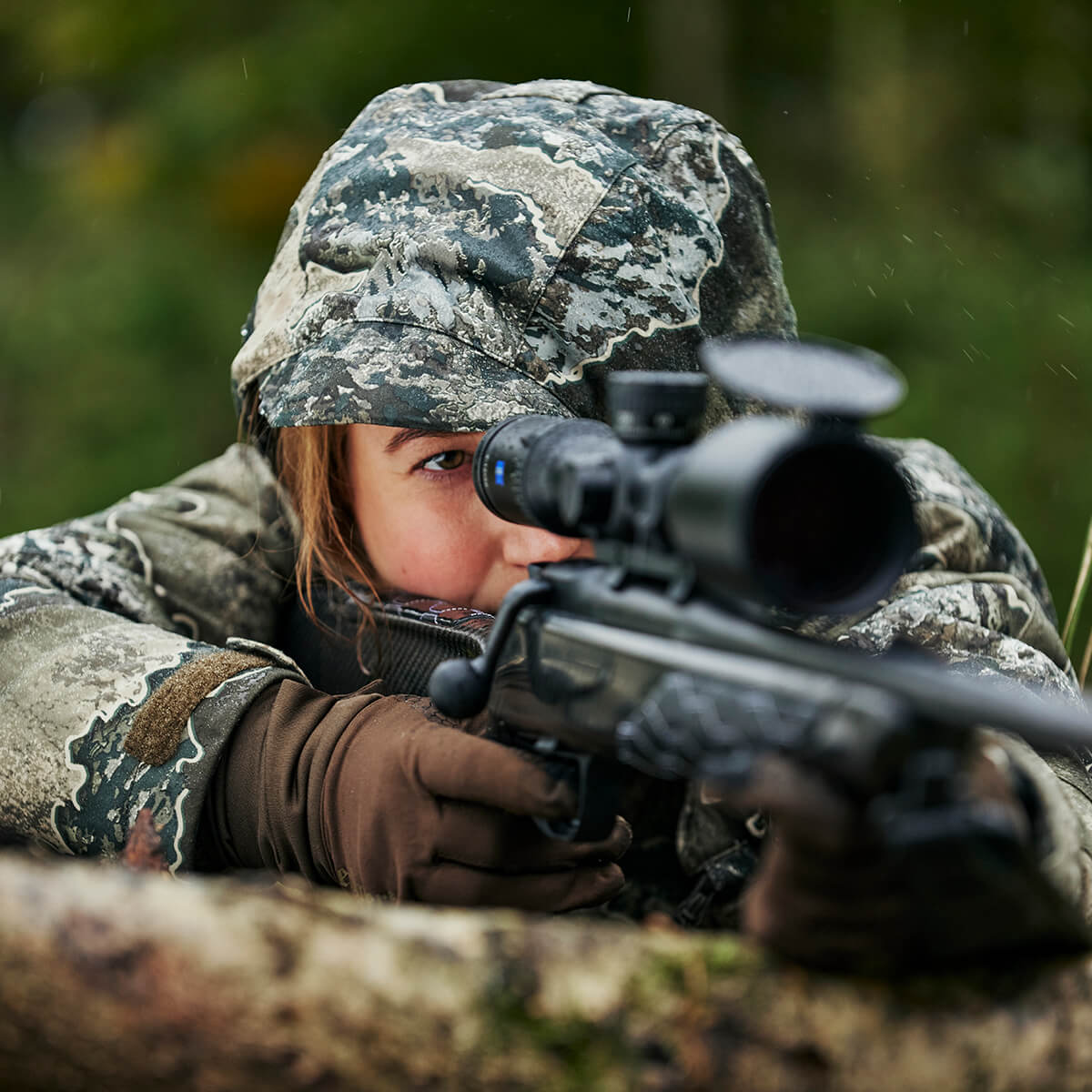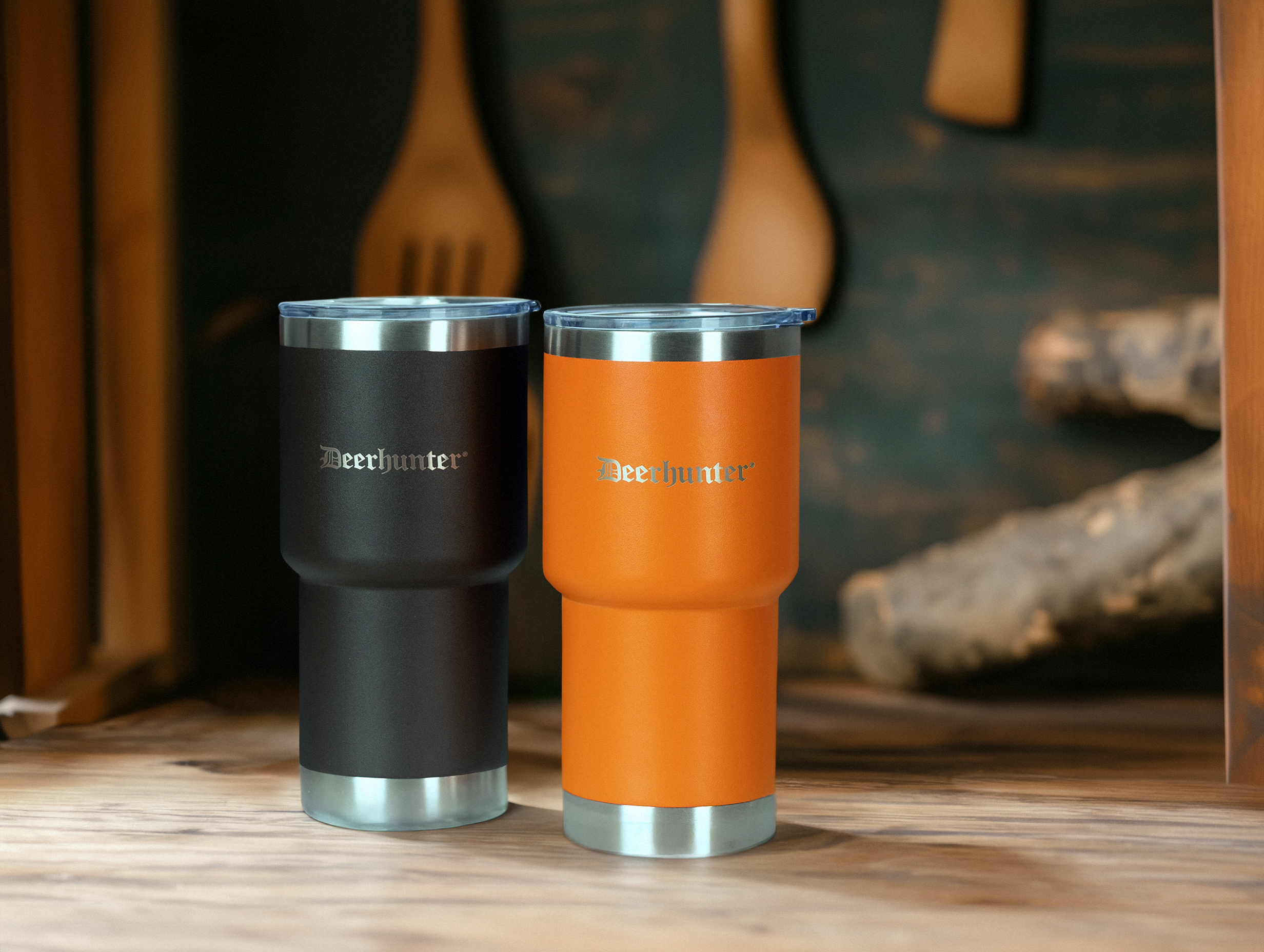
Disclaimer
This article may contain rules that do not apply to your country. Please check which rules applies to your country.

ROE DEER
The roe deer population has grown steadily over the past 40 years, and it is one of the most popular species of game among hunters today. The roebuck has become a highly sought after trophy. The roe deer (Capreolus capreolus) is the smallest of the four deer species in Denmark. The shoulder height is 60-90 cm and body length 90-130 cm, while the weight typically ranges from 15 up to 30 kg. The deer begin to shed in April/May – bringing out their beautiful short reddish-brown fur. When the cold sets in in autumn, roe deer take up their thick grey winter coat again.
A roe deer is not just a roe deer
Hunters distinguish between the male and female:
- The male is called a roebuck or buck.
- The female gives birth to fawns and is called a doe.
- A young roe that has not yet lambed is called a fawn or, once they are around one year, a yearling.
- An adult roe deer doe is one that has lambed, although it may well be only two years old.
The buck’s antlers
Bucks begin to set antlers during the winter months, after the old antlers have been shed. During this growth process the antlers are covered with a layer of skin called ‘velvet’, which supplies nutrition to the antlers during growth and is soft to the touch. Roebucks begin to rub their antlers once they are fully developed. For some bucks this happens in March, while others have not finished rubbing when the Danish buck hunting season begins on 16 May. The antlers are rubbed against thin branches and twigs, and their colour depends on which plants the bucks have been rubbing. The roebuck continues to rub its antlers throughout the summer until mating season. It uses rubbing to apply scent from glands in the forehead and near the eyes. It also makes scrapes in which it applies scent from glands in the hoofs, so that rivals can see and smell its territory.

Delayed gestation
The mating season starts in late July and early August. The roebuck will try to mate with all the does in its territory during this time and is therefore highly preoccupied with keeping the other bucks away. Once the doe has been mated with, the fertilised egg enters a dormant stage until January, after which the foetus begins to develop. This is called delayed gestation. Does give birth to between one and three fawns in May or June. Initially the doe leaves the fawn to forage, but the fawns are soon large enough to accompany the doe during foraging. Roe fawns are at high risk during the first few months of life. It is estimated that up to 60% of roe fawns get taken by foxes.

Plentiful roe deer
Afforestation, green winter fields and lots of coverts and hedgerows provide good conditions for roe deer. The total size of the population in Denmark is not known, but it is estimated to be over half a million. More than 100,000 roe deer are bagged by hunters each year in Denmark. A number of deer are also killed in traffic or die of disease. Despite this, the population is stable and increasing in some areas. This clearly illustrates how well roe deer have adapted to the Danish environment, and how fast they can reproduce.
There are roe deer everywhere
You can find roe deer anywhere there is a suitable feed. Roe deer do not graze, but prefer fresh shoots or new grass sprouts. If you observe a roe deer eating, you will note how it feeds on a range of plants and flowers. Roe deer have 50-60 different plants on the menu.

Find your Deerhunter clothing here
BUY NOW
Where roe deer can be hunted
Roe deer are never far away from the shelter of trees, and meadows close to forest edges are often a preferred location. But in today’s cultural landscape, you might also find a summer buck in the middle of a canola field, enjoying the oil-rich plants. When hunters go buck hunting, they go early in the morning, or in the evening, about an hour before sunset. However, it is also possible to find roebucks in the middle of the day. It does not have to be bright sunshine or even dry, because a buck can be bagged in almost any weather conditions.
Hunting season
The buck hunting season in Denmark is from the 16 May to 15 July. Hunters typically sit in a high seat or tower or stalk the buck. When stalking, it is important to get close to the deer, before shooting it with a rifle or bow. Note that shotguns must NOT be used in Denmark during the spring hunt! Both does and bucks may be shot in Denmark during autumn. The autumn roe deer hunting season is from 1 October until the end of January. Hunters still hunt at a distance, while it gets harder and harder to stalk the deer as the quantity of dry leaves increases. But many roe deer are bagged through flush hunting and line driving using a rifle. Roe deer are also bagged using shotguns in some areas. This is quite acceptable and effective, as long as the recommended maximum shooting distance of 20 metres is observed – and only side shots and large pellets.

Guns and ammunition
Most hunters shoot roe deer using a rifle. What is the perfect calibre or bullet for roe deer is open to discussion. The possibilities are almost unlimited, from 5.56 mm and up – as long as the projectile meets the legal requirements: a weight of at least 3.2 g (50 gr) and impact energy (E100) of at least 800 J.
Gear
A hunter never allows poor equipment to let him down, but if you want to reduce your gear to the minimum, here is a good list:
- Binoculars
- Gutting knife
- Carry strap for transporting the buck back to the vehicle
- A tub to put the deer in so that no blood gets spilled in the vehicle
- Mosquito repellent
- Hot coffee for the cold mornings

A culinary experience
Roe deer meat has a wonderful game flavour, and it is with good reason that venison loin from summer bucks is an important dish in fine restaurants during early summer. A freshly shot summer buck where the loin is cut into small tournedos and wrapped in bacon, fried in butter and flambéed in brandy is simply exquisite. It also goes well with freshly dug potatoes and green asparagus – bon appétit.
LEARN MORE ABOUT HUNTING GAME
See all the posts from our Deerhunter blog
















